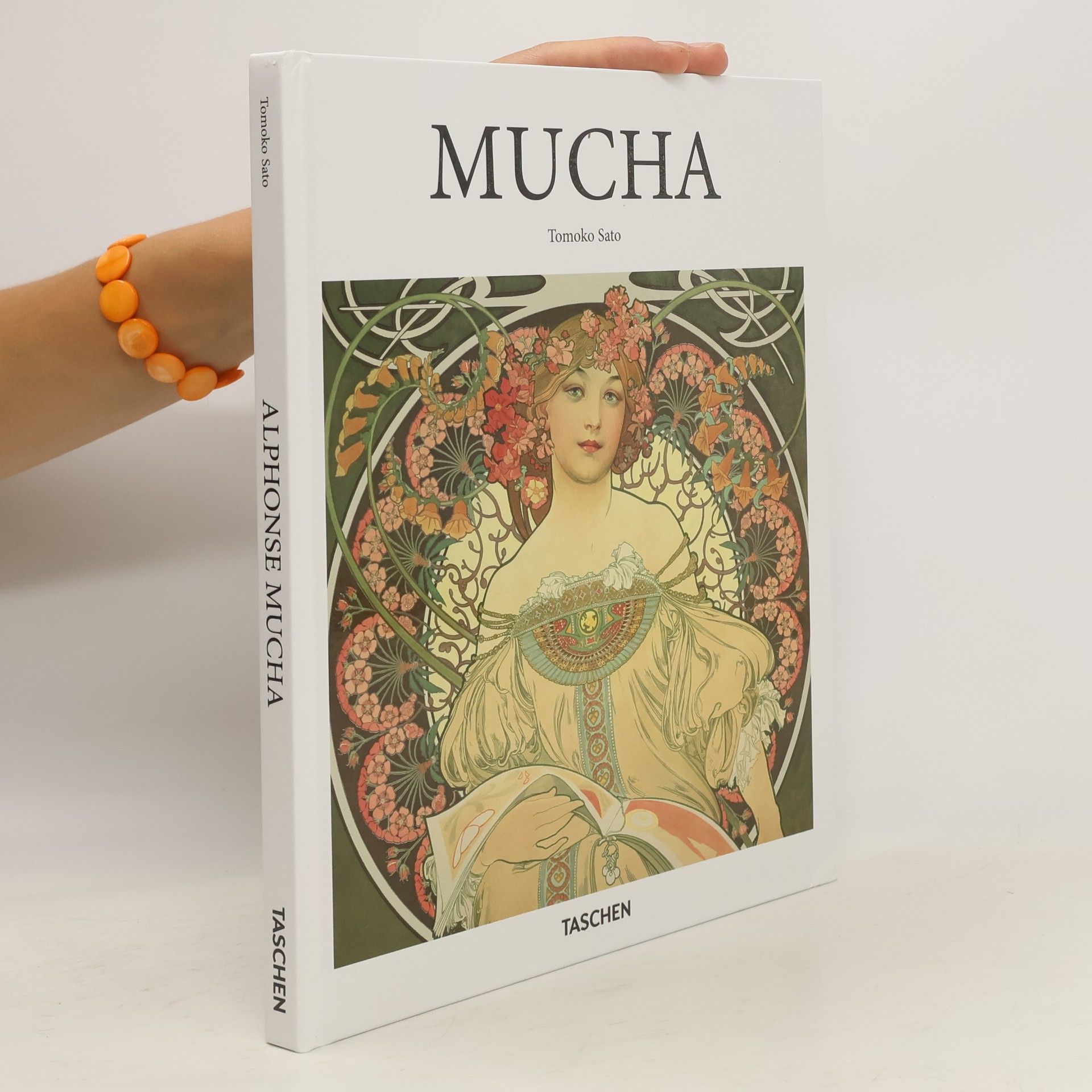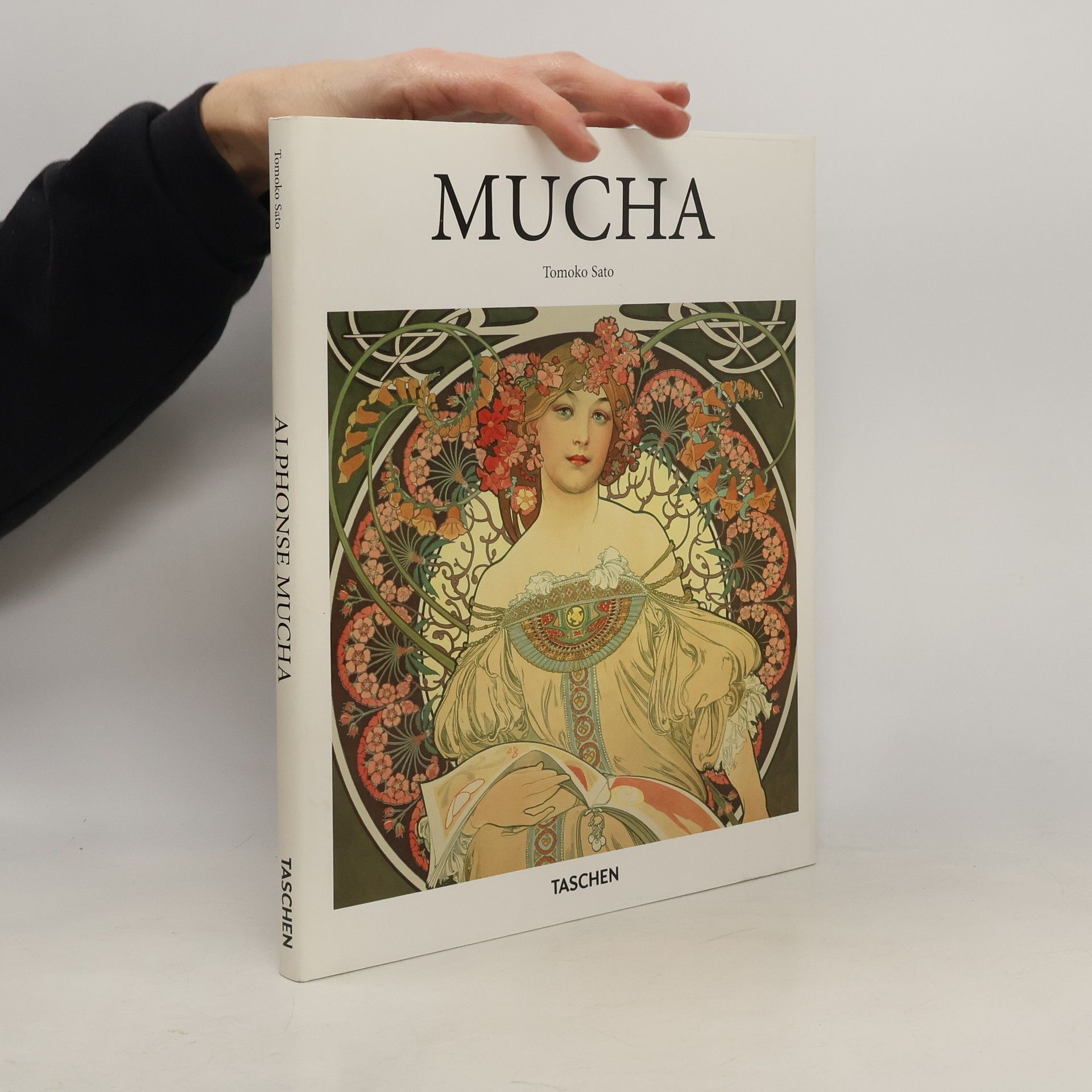Con il suo stile decorativo immediatamente riconoscibile, l'artista ceco e maestro dell'Art Nouveau Alphonse Mucha (1860-1939) plasmò l'immagine della fin du siècle. Giocate su evocative tonalità pesca, oro, ocra e oliva, le sue affascinanti composizioni di motivi, fiori e belle donne fondarono l'iconografia della Belle Époque. All'epoca, l'opera di Mucha lasciò un'impronta indelebile nei vari ambiti in cui spaziò: dall'illustrazione ai manifesti, dalle cartoline alla grafica pubblicitaria. Particolarmente famosi furono gli straordinari manifesti che ritraevano la grande attrice e star del teatro Sarah Bernhardt. Parallelamente alle delicate opere decorative, l'artista portava avanti con slancio e convinzione le proprie idee politiche. Con il monumentale ciclo "L'epopea slava" espresse la sua fede nel panslavismo promuovendo l'indipendenza politica delle nazioni ceche e slave dall'Impero austro-ungarico. Realizzato in collaborazione con la Mucha Foundation, questo libro presenta le opere chiave dell'artista e mette in luce la vasta portata della sua produzione, dai motivi decorativi alle illustrazioni per libri, dai manifesti alle fotografie e ai dipinti monumentali.
Tomoko Satō Knihy
Tento autor skúma zložitosť ľudskej psychiky a vzťahov prostredníctvom hlbokých a introspektívnych rozprávaní. Jeho diela sa často zaoberajú témami straty, pamäti a hľadania identity, pričom sú napísané s citom pre detail a emocionálnu rezonanciu. Štýl autora je charakteristický svojou lyrickou kvalitou a schopnosťou zachytiť jemné nuansy ľudskej skúsenosti. Čitatelia oceňujú jeho prenikavý pohľad na ľudskú povahu a jeho schopnosť vytvárať nezabudnuteľné, myšlienkovo podnetné príbehy.






Alphonse Mucha 1860-1939 : the artist as visionary
- 96 stránok
- 4 hodiny čítania
With his instantly recognizable decorative style, Czech artist and Art Nouveau master Alphonse Mucha (1860–1939) defined the look of the fin-de-si?cle. In evocative shades of peach, gold, ochre, and olive, his seductive compositions of patterns, flowers, and beautiful women became paradigms of the Belle Époque years. Mucha’s work permeated…
Nobuyoshi Araki
- 720 stránok
- 26 hodin čítania
The definitive overview of Japan's greatest and most controversial living photographer.
Alphonse Mucha
- 247 stránok
- 9 hodin čítania
Alphonse Mucha was an extraordinarily prolific and versatile artist who made his mark in the diverse fields of design - including posters, jewellery, interior decoration, theatre, packaging and product designs - as well as in painting, book illustration, sculpture and photography. He is one of the best-known Czech artists to wide international audiences today and rose to international fame in fin-de- siècle Paris with his elegant designs for theatre posters for Sarah Bernhardt, the most famous French actress of the time, and decorative panels ( panneaux décoratifs ) featuring gracefully posed women. For those posters Mucha created a distinctive style - "le style Mucha" - characterised by harmonious compositions, sinuous forms, organic lines and a muted palette, which became synonymous with the newly emerging decorative style of the time - Art Nouveau. By the time of the Paris Exposition Universelle of 1900, Mucha had become a leading figure in this decorative art movement, who defined the look of the era. The catalogue explores the development of Mucha's career and overall achievements as a multifaceted and visionary artist. It is divided into six sections, highlighting Mucha's personality as Bohemian; picture maker for people; cosmopolitan; mystic; patriot and philosopher.
Der tschechische Jugendstilkünstler Alfons Mucha (1860–1939) prägte mit Kompositionen aus geschwungenen Linien und floralen Details das Erscheinungsbild des Fin de Siècle. Seine verführerischen Bilder schöner Frauen in sinnlichen Farbschattierungen von Pfirsich, Oliv, Ocker und Gold wurden zum Inbegriff der Belle Époque. Muchas Werk prägte die Illustrationen, Plakate, Postkarten und Werbeentwürfe seiner Zeit. Besonders seine hochformatigen Plakate der Schauspielikone Sarah Bernhardt erlangten Berühmtheit. Abseits dieser Arbeiten in dekorativem Stil verfolgte Mucha feste politische Ziele. Mit dem monumentalen Gemäldezyklus Das Slawische Epos formulierte er seine entschiedene Unterstützung des Panslawismus und warb für die politische Unabhängigkeit der Tschechen und aller anderen slawischen Völker von Österreich-Ungarn. Dieses Buch stellt – in Zusammenarbeit mit der Mucha Foundation – die Schlüsselwerke des Künstlers vor und präsentiert die gesamte Bandbreite seines Œuvre: vom dekorativen Ornament über Buchillustrationen, Plakate und Fotografien bis zu monumentalen Gemälden.